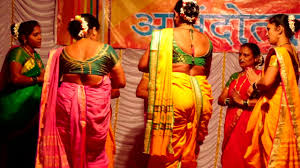Kite Flying and its Significance



 Udi udi re Patang mori ude re…
Udi udi re patang mori udi re…
This is the song seldom heard these days over the radio. I still recollect the wonderful story called “Kaki” a Bal Sahitya by Siyaram Sharan Gupt in Hindi
Udi udi re Patang mori ude re…
Udi udi re patang mori udi re…
This is the song seldom heard these days over the radio. I still recollect the wonderful story called “Kaki” a Bal Sahitya by Siyaram Sharan Gupt in HindiIn this particular story, the writer emphatically emphasizes the use of a Kite by the little boy to send a message to his departed mother. I am still touched by the story and when looking up high in the sky, all the colorful kites flying, think deep in, maybe amongst all one kite could be such that is carrying a message to near and dear ones if not all. Makar Sankranthi is the first festival of Uttarayana is the festival in most parts of India that welcomes Kite flying. Today, kite flying has become a regular tradition in almost all countries of the world. Moreover, it has become a festival in some countries. Different shapes, sizes, colours, and designs have taken over the traditional kites that conveyed peace, brotherhood, and harmony. In states especially like Gujurat and Punjab, it is a holiday event and time for outdoor family get together. People of all ages fly kites from dawn to dusk. History has it that India developed a rich tradition of kite flying due to the patronage of the Kings and 'Nawabs' who found the sport both entertaining and a way of displaying their prowess. Slowly, this entertaining game became popular among the common masses. Today, manufacturing kites is a serious business. Rampur, in Uttar Pradesh, is quite famous for Kite manufacturing. There are other places in India quite popular for kite manufacturing. Members of various communities irrespective of caste and creed are engaged in the business of kites. Rich or poor, people enjoy this festival in their own ways. In Rajasthan state, one of the NGOs effectively used the Kite medium for the awareness campaign. Kites with social messages like ‘Protect our Environment’, ‘Say no to Child Labour’, ‘Say no to Child Marriage’, and ‘Grow more trees’. Kite flying helps in concentration development free of cost. This could be one of the reasons in the olden days that everyone participated wholeheartedly and gained a good amount of concentration and patience. It also gives good exercise both to the body and brain. It is good for the eyes, as it involves lots of eye movements. One of my brothers is very much interested in flying kites and use to try out various shapes, sizes, and innovative techniques. Those days we could not afford colour papers for making kites. Yet another interesting thing was, in those days whole family and friends joined together in making kites, seldom bought from shops. I use to assist him in pasting, and softening cooked rice into a paste and used it as glue. Once he even made a kite that could hold a small earthen lamp. This kite he was made to fly in the night, even though this was something new, as against kite flying done during day time. This was the talk of the town and it was my pride that my brother made it. Now he hardly finds time for kite flying. I sometimes wonder, have we outgrown kite flying??? There are films that have popularized kite flying like Tamil film Baba, Chandramukhi, and so on. Today, the market is flooded with varieties of kites, I was puzzled to see so many colours, shapes, and sizes. More interestingly China Kites are in demand along with mobile handsets. In Lucknow city, there is a kite that bears the picture of Bollywood star Malaika Arora with his song 'Munni Badnam Hui'. Many kites bear photos from films like Ready, Bodyguard, etc.










Comments